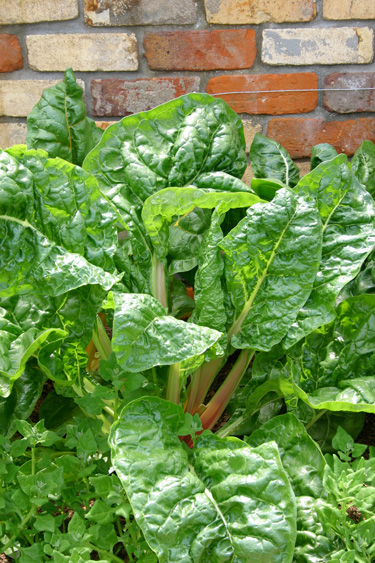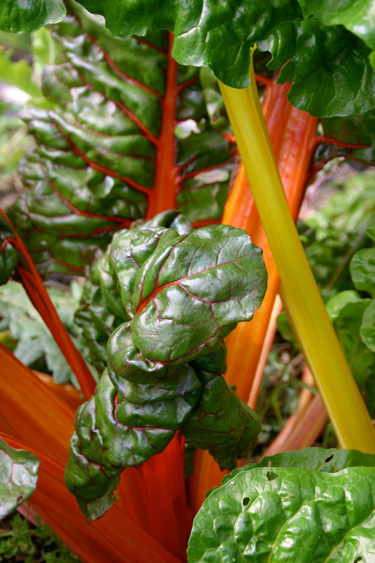Silverbeet - the humble hero
Sue Linn expounds the virtues of a great kiwi standby.
In at least one respect I was a weird child - I loved silverbeet. I would quietly devour my pile of dark green leaves (smothered in butter) while my siblings were cajoled with tales of Popeye the Sailor Man, who was struck with superhuman strength whenever he ate his greens. Actually I doubt Popeye was ever a very believable advocate. His vegetable of choice was spinach in a can! Proof, if ever a five-year-old needed it, that anything good for you must taste disgusting!
Spinach of course is far from disgusting when served at its best (raw or stir-fried just enough to wilt). I eat it often, but I prefer silverbeet for two important reasons; I prefer its milder taste plus it’s an easy, all- season crop.
So convenient
When it’s five minutes till dinnertime and there are no fresh veges in the fridge, there is always silverbeet a few footsteps from the kitchen. This is one vege I never buy from the supermarket.
I do buy it from the garden centre however. Regularly. If I was more organised I might grow it all from seed, but for now it is easy to pick up a punnet. A six-pack of Silverbeet ‘Ironman’, ‘Perpetual Spinach’, ‘Bright Lights’ or ‘Rainbow Chard’ is quite often what I choose for that extra punnet to meet the multiple purchase price that most garden centres offer on seedlings. If there’s no room for a row, I pop them in singly, wherever there’s a gap.
Even if you don’t have a dedicated vege plot, you can grow silverbeet among flowers or in a pot. The vivid pink, red, yellow or orange stems of the ‘Rainbow’ selections are as colourful as any flower.
Easy to grow
It’s hard to go wrong with silverbeet. To be sure you never run out, sow or plant in spring and again in autumn. A silver beet ‘seed’ is actually a cluster of tiny seeds. Seedlings may be left as clusters or thinned to the strongest seedlings.
For continuous lush green growth, prepare a well-drained soil with plenty of compost and allow your plants plenty of room. New leaves are produced on the inside of the plant as you harvest the outer ones. Silverbeet plants may run to seed if they are allowed to dry out, so keep them well watered, especially if growing them in pots.
Protect young seedlings from slugs and snails. Otherwise pest and disease problems are few, although I find I have to cover my young plants with net to stop the birds, who seem as partial to this vege as I am. Caterpillars are also occasional culprits.
Fungal spots sometimes show up on older silverbeet leaves, especially in warm wet weather. You may see orange rust spots or Cercospora leaf spots, which are light grey with brown margins and eventually fall out, causing ‘shot holes’. This is not usually a serious problem and the leaves are still edible, but you can minimise it by removing and destroying affected leaves.
Nutritional value
Silverbeet is a good source of magnesium, iron and potassium, as well as vitamins A and C, while low in calories (21 cal per 100g) and fat. Cook it quickly in as little water as possible to retain high levels of these nutrients.
What silverbeet likes best …
- Deep, crumbly, well-drained soil. If drainage is a problem, grow it in raised beds or containers.
- Water. Although silverbeet needs free draining soil it must be kept well watered, especially in summer. Silverbeet leaves are 93% water!
- Mulch to conserve soil moisture.
- Full sun or part shade.
- Nitrogen. Before planting, feed the soil with compost and well rotted animal manure (e.g. sheep pellets) or blood and bone. A green crop dug into the soil in spring is another excellent source of nitrogen.
- A kiwi winter. Silverbeet is a coastal plant, which thrives in a wide range of climates, but it does especially well in cool, frost-free conditions. Warm humid conditions can favour fungal leaf spots, while hard frost may damage the leaves.

10-Aug-2015


Rainbow silverbeet or chard

